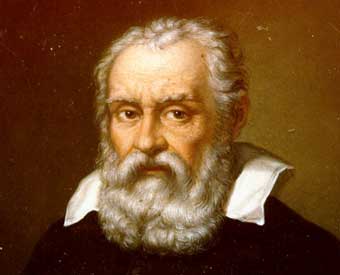
Galileo Galilei.
Galileo made original contributions to the science of motion through an innovative combination of experiment and mathematics.
Vincenzo Galilei, Galileo's father, was a music theorist and a lutenist. He had performed experiments establishing the oldest known non-linear relation in physics: for a stretched string, the pitch varies as the square root of the tension.
These observations lay within the framework of the Pythagorean tradition of music. They were well-known to instrument makers, which included the fact that subdividing a string by a whole number produces a harmonious scale.
Thus, a limited amount of mathematics had long related music and physical science, and young Galileo could see his own father's observations expand on that tradition.
Galileo was one of the first modern thinkers to clearly state that the Laws of Nature are mathematical. He wrote in The Assayer that "Philosophy is written in this grand book, the universe ... It is written in the language of mathematics, and its characters are triangles, circles, and other geometric figures;...."
His mathematical analyses are a further development of a tradition employed by late scholastic natural philosophers, which Galileo learned when he studied philosophy. He displayed a peculiar ability to ignore established authorities, most notably Aristotelian ism.
In broader terms, his work marked another step towards the eventual separation of science from both Philosophy and religion - a major development in human thought. He was often willing to change his views in accordance with observation.
In order to perform his experiments, Galileo had to set up standards of length and time, so that measurements made on different days and in different laboratories could be compared in a reproducible fashion. This provided a reliable foundation on which to confirm mathematical laws using Inductive Reasoning.
Galileo showed a remarkably modern appreciation for the proper relationship between mathematics, theoretical physics, and experimental physics. He understood the parabola, both in terms of conic section and in terms of the ordinate
Galileo further asserted that the parabola was the theoretically ideal trajectory of a uniformly accelerated projectile in the absence of friction and other disturbances. He conceded that there are limits to the validity of this theory, noting on theoretical grounds that a projectile trajectory of a size comparable to that of the earth could not possibly be a parabola.
Based only on uncertain descriptions of the first practical telescope, invented in the Netherlands in 1608,by Hans Lippershey , Galileo, in the following year, made a telescope with about 3x magnification.
He later made improved versions with up to about 30x magnification. With Galilean telescope the observer could see magnified, upright images on the earth—it was what is commonly known as a terrestrial telescope or a spyglass.


